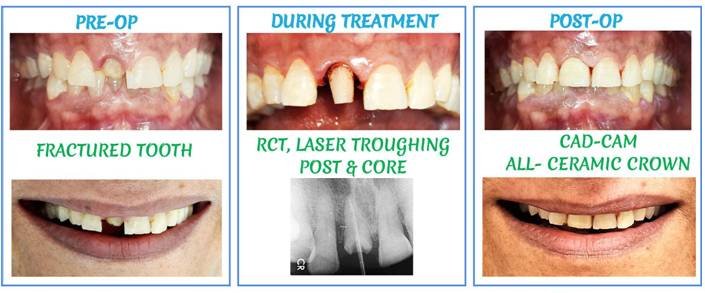What is a dental crown/cap?
A dental crown is a tooth-shaped “cap” or covering that is placed over a tooth – to restore its shape, size, strength, and improve its appearance. When cemented into place, the crowns fully encase the entire visible portion of a tooth that lies at and above the gum line.
Why is a dental crown needed?
A dental crown may be needed in the following situations:
- To protect a weakened tooth from breaking (for example, a root canal treated tooth)
- To restore an already broken tooth or a tooth that has been severely worn down
- To cover and support a tooth with a large filling when there isn’t a lot of tooth left
- To hold a dental bridge in place
- To cover severely discoloured teeth
- To cover a dental implant
- To make a cosmetic modification
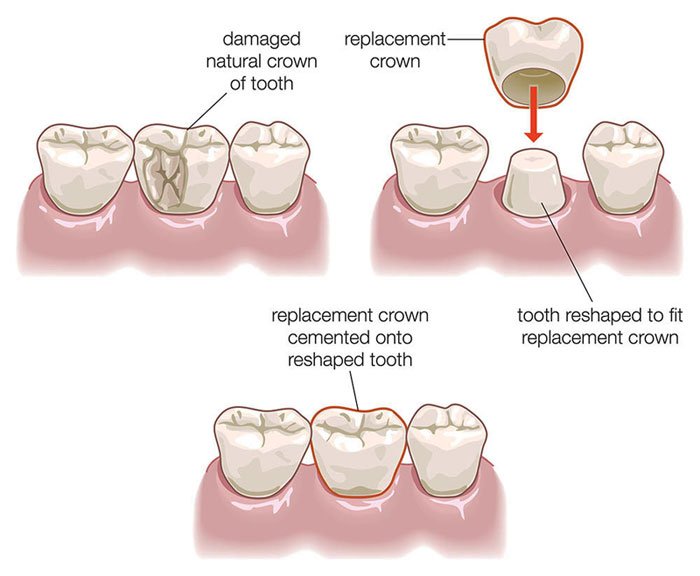
For children, a crown may be used on milk (baby) teeth in order to:
- Save a tooth that has been so damaged by decay that it can’t support a filling.
- Protect the teeth of a child at high risk for tooth decay, especially when a child has difficulty keeping up with daily oral hygiene.
- Decrease the frequency of general anesthesia for children unable to cooperate with certain dental care procedures because of age, behaviour, or medical history.
In such cases, a pediatric dentist is likely to recommend a stainless steel crown.
What are the types of crowns available?
PFM (Porcelain Fused to Metal)
It is a type of crown with porcelain layered on top of the supporting structure of the metal. This makes it a stronger restoration than porcelain alone. However, it requires more removal of healthy tooth structure to accommodate the restoration. It is considered highly resistant to wear and tear but it does not match the translucency of the natural tooth as well as the all-ceramic (metal-free) restoration. Hence its use in the front teeth is limited.
The crown’s porcelain portion can also chip or break off and sometimes the metal underlying the crown’s porcelain can show through as a dark line, especially at the gum line and even more so if your gums recede. These crowns can be a good choice for back teeth as well as long bridges where the metal is needed for strength.
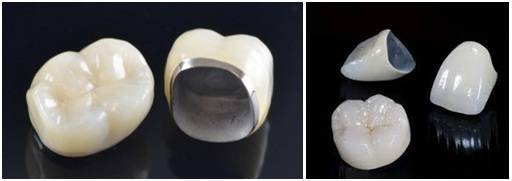
Types of PFM crowns:
- Casted
- Laser-sintered (DMLS): Highly advanced laser sintering technology is used to make the inner coping of the crown which significantly improves the precision and hence the fit and longevity.
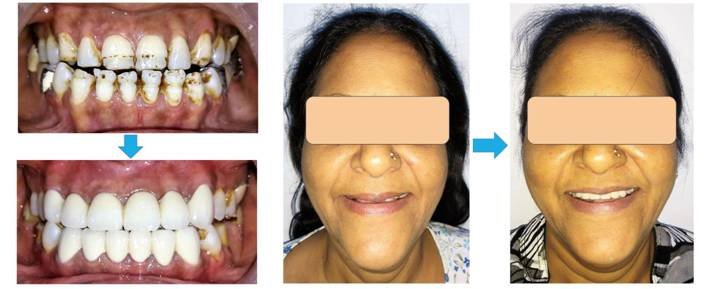
Zirconia (Metal-free)

- Layered : All ceramic layered restorations are preferred at places where better esthetics is the primary concern because their colour and translucency resemble that of a natural tooth. The strength of these restorations depends on the thickness of the porcelain and the ability to bind to the tooth surface. They are highly resistant to wear and tear but can undergo fracture if placed under high impact or tension. These are mostly used in front teeth.
- Monolith: When dealing with posterior teeth, all-ceramic restorations with high strength are preferred. Their esthetics is relatively lower when compared to the layered all-ceramic prosthesis, but the strength is higher, which is required for biting food, especially with posterior teeth.

Stainless Steel Crowns
Stainless steel crowns are prefabricated crowns that are used primarily on children, to fit over a primary tooth that has been prepared to fit it. The crown covers the entire tooth and protects it from further decay. When the primary tooth comes out to make room for the permanent tooth, the stainless steel crown comes out naturally with it.
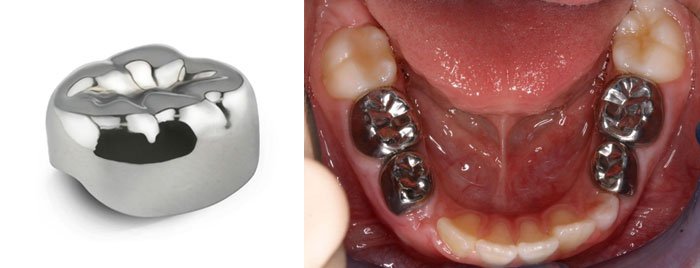
In general, stainless steel crowns are used for children’s teeth because they don’t require multiple dental visits to put in place and so are more cost-effective than custom-made crowns and provide the preventive dental care needed to protect a tooth without a crown.
Temporary versus Permanent
Temporary crowns can be made at the dental clinic itself, whereas most permanent crowns are typically made in a dental laboratory. Typically, temporary crowns are made of an acrylic-based material and can be used as a temporary restoration until a permanent crown is constructed by a lab.

